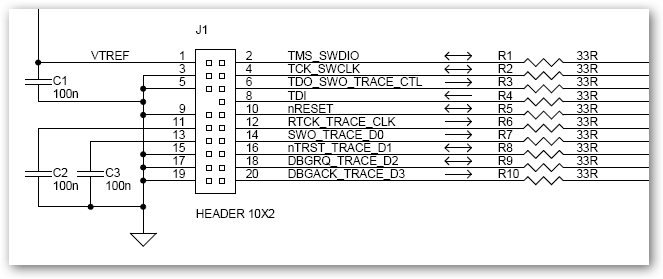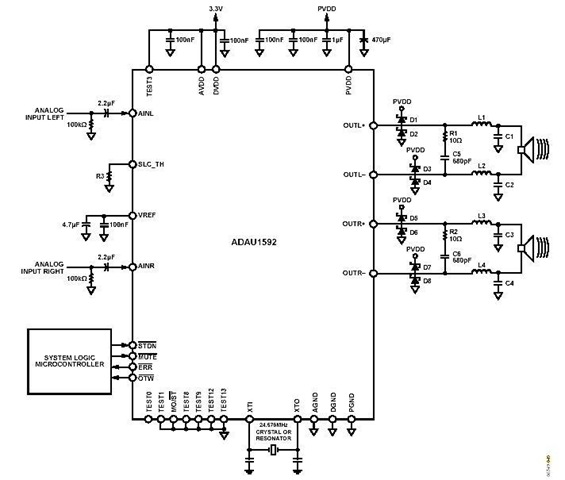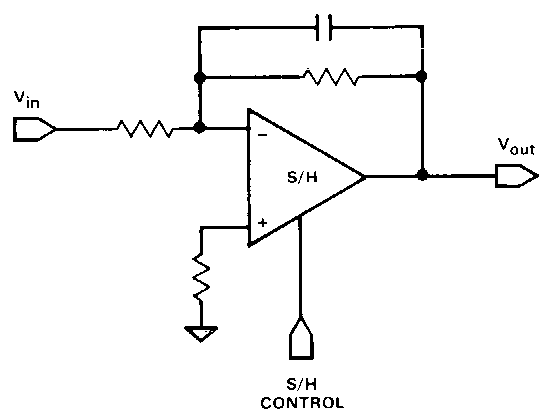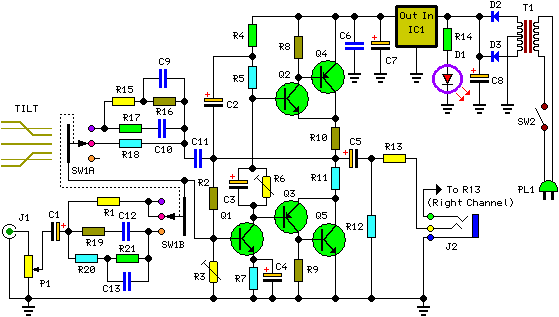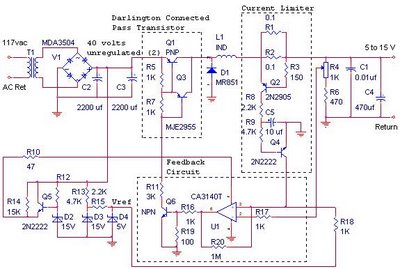
Free Energy Schematic
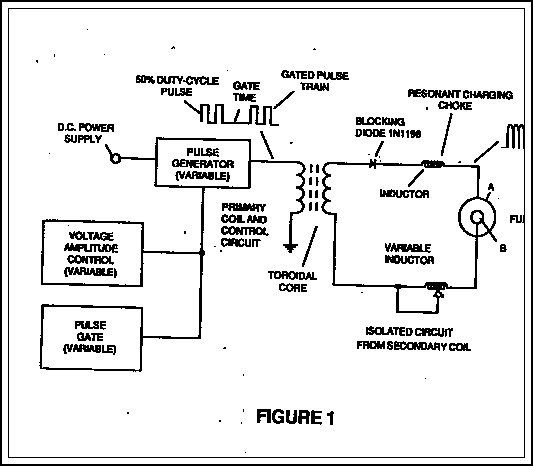
The fundamental concept involves a high-frequency, high-voltage, low-current signal that is rectified and subsequently utilized to charge a bank of high-value capacitors. These capacitors are then discharged in pulse mode for brief intervals, specifically in the nanosecond range, through a high-speed electronic switching circuit or a mechanical device. Additionally, a rectification method is employed that permits the high-voltage charge to flow in only one direction.
The circuit design for this concept typically includes several key components. The high-frequency source can be generated using an oscillator circuit, which may utilize a crystal oscillator or a high-speed transistor-based oscillator to achieve the desired frequency. The output of this oscillator is directed to a rectifier circuit, which can be constructed using diodes capable of handling high voltage and fast switching speeds, such as Schottky diodes. This rectification process converts the alternating current (AC) signal into direct current (DC), allowing for efficient charging of the capacitors.
The bank of capacitors is selected based on the required capacitance and voltage ratings, ensuring they can handle the high-voltage charge without risk of breakdown. Capacitors such as tantalum or ceramic types may be suitable due to their ability to maintain stability under high-frequency conditions.
For the discharge phase, a high-speed electronic switching circuit is critical. This can be achieved using MOSFETs or IGBTs (Insulated Gate Bipolar Transistors), which are capable of switching on and off at very high speeds, allowing for precise control over the discharge timing. The discharge circuit is designed to release the stored energy from the capacitors in short, controlled pulses, which can be utilized for various applications, such as in pulsed power systems or high-energy physics experiments.
To ensure that the high-voltage charge flows in one direction only, a unidirectional rectification method is employed. This can be achieved through the use of a bridge rectifier configuration or by implementing a combination of diodes in series with the capacitors.
Overall, this circuit design encapsulates a sophisticated approach to managing high-frequency, high-voltage signals for energy storage and rapid discharge applications, emphasizing the importance of component selection and circuit configuration to achieve optimal performance.The basic concept as I understand it, is a high frequency high voltage low current rectified and then used to charge a bank of high value capacitors and then to discharge them in pulse mode for brief period of time, nano seconds in fact by, means of a high speed electronic switching circuit or mechanical device and a rectification method that will only allow the high voltage charge to flow in one direction. 🔗 External reference
The circuit design for this concept typically includes several key components. The high-frequency source can be generated using an oscillator circuit, which may utilize a crystal oscillator or a high-speed transistor-based oscillator to achieve the desired frequency. The output of this oscillator is directed to a rectifier circuit, which can be constructed using diodes capable of handling high voltage and fast switching speeds, such as Schottky diodes. This rectification process converts the alternating current (AC) signal into direct current (DC), allowing for efficient charging of the capacitors.
The bank of capacitors is selected based on the required capacitance and voltage ratings, ensuring they can handle the high-voltage charge without risk of breakdown. Capacitors such as tantalum or ceramic types may be suitable due to their ability to maintain stability under high-frequency conditions.
For the discharge phase, a high-speed electronic switching circuit is critical. This can be achieved using MOSFETs or IGBTs (Insulated Gate Bipolar Transistors), which are capable of switching on and off at very high speeds, allowing for precise control over the discharge timing. The discharge circuit is designed to release the stored energy from the capacitors in short, controlled pulses, which can be utilized for various applications, such as in pulsed power systems or high-energy physics experiments.
To ensure that the high-voltage charge flows in one direction only, a unidirectional rectification method is employed. This can be achieved through the use of a bridge rectifier configuration or by implementing a combination of diodes in series with the capacitors.
Overall, this circuit design encapsulates a sophisticated approach to managing high-frequency, high-voltage signals for energy storage and rapid discharge applications, emphasizing the importance of component selection and circuit configuration to achieve optimal performance.The basic concept as I understand it, is a high frequency high voltage low current rectified and then used to charge a bank of high value capacitors and then to discharge them in pulse mode for brief period of time, nano seconds in fact by, means of a high speed electronic switching circuit or mechanical device and a rectification method that will only allow the high voltage charge to flow in one direction. 🔗 External reference
